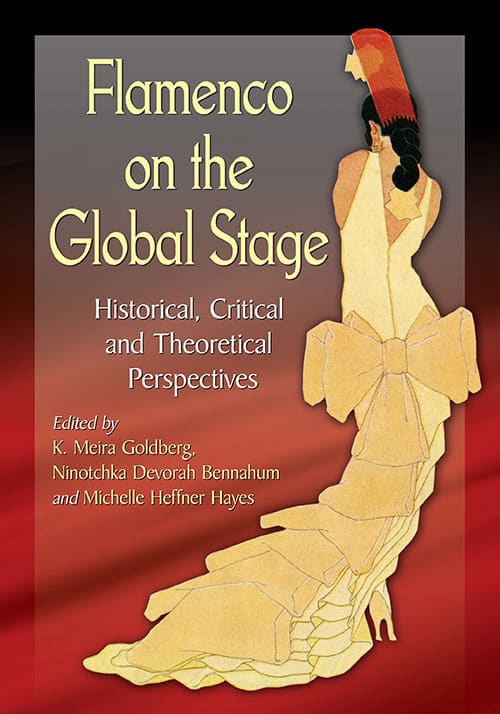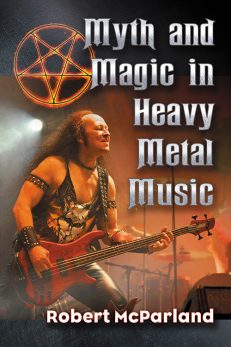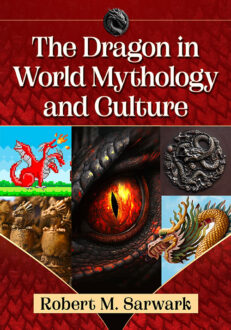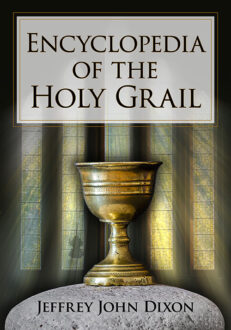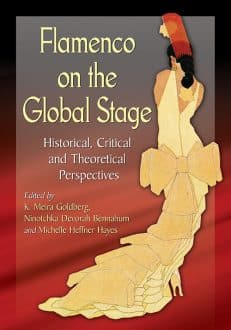Flamenco on the Global Stage
Historical, Critical and Theoretical Perspectives
$39.95
In stock
About the Book
The language of the body is central to the study of flamenco. From the records of the Inquisition, to 16th century literature, to European travel diaries, the Spanish dancer beguiles and fascinates. The word flamenco evokes the image of a sensuous and rebellious woman—the bailaora —whose movements seduce the audience, only to reject their attention with a stomp of defiance. The dancer’s body is an agent of ideological resistance, conveying a conflicting desire for subjectivity and autonomy and implying deeply held ideas about history, national identity, femininity and masculinity.
This collection of new essays provides an overview of flamenco scholarship, illuminating flamenco’s narrative and chronology and addressing some common misconceptions. The contributors offer fresh perspectives on age-old themes and suggest new paradigms for flamenco as a cultural practice.
Instructors considering this book for use in a course may request an examination copy here.
About the Author(s)
Bibliographic Details
Edited by K. Meira Goldberg, Ninotchka Devorah Bennahum and Michelle Heffner Hayes
Format: softcover (7 x 10)
Pages: 348
Bibliographic Info: 40 photos, notes, glossary, bibliography, index
Copyright Date: 2015
pISBN: 978-0-7864-9470-5
eISBN: 978-1-4766-2102-9
Imprint: McFarland
Table of Contents
Acknowledgments
Introduction 1
Part I—Mapping Spanish Dance on the International Stage
Three Centuries of Flamenco: Some Brief Historical Notes (Marta Carrasco Benítez) 23
Ancient Dancers of Cádiz, Puellae Gaditane and Creations of Myth (Kathy Milazzo) 33
Hopeful Futures and Nostalgic Pasts: Explorations into Kathak and Flamenco Dance Collaborations (Miriam Phillips) 42
From the Járaca to the Sarabande (Ana Yepes) 56
Spanish Dance in Europe: From the Late Eighteenth Century to Its Consolidation on the European Stage (Rocío Plaza Orellana) 71
Fandangos and Bailes: Dancing and Dance Events in Early California (Anthony Shay) 81
Hispanomania in Nineteenth Century Dance Theory and Choreography (Claudia Jeschke with Robert Atwood) 95
Some Notes Toward a Historiography of the Mid-Nineteenth Century Bailable Español (Kiko Mora) 103
Antecedents of Carmen in the History of Spanish Dance (Gerhard Steingress) 117
Part II—Becoming Flamenco
Gitano Embodiment and Modernist Subjectivity Jaleo de Jerez and Tumulte Noir: Primitivist Modernism and Cakewalk in Flamenco, 1902–1917 (K. Meira Goldberg) 124
The First Academy of Flamenco Dance: Frasquillo and the “Broken Dance” of the Gitanos (Clara Chinoy) 143
The Critical Reception of Le Tricorne (Joan Acocella) 157
Purity and Commercialization: The View from Two Working Artists, Pericón de Cádiz and Chato de la Isla (John C. Moore) 166
Carmen Amaya, 1947: The (Gypsy) Beloved of America Reconquers Europe (Montse Madridejos) 178
Flamenco: The Real Stories (Brook Zern) 187
Spanish Artists in Love and War, 1913–1945: Meditations on Female Embodiment and Populist Imagination (Ninotchka Devorah Bennahum) 193
Part III—Disobedient Bodies: Flamenco in the “New” World
Normative Aesthetics and Cultural Constructions in Flamenco Dance: Female and Gitano Bodies as Legitimizers of Tradition (Cristina Cruces-Roldán) 210
Las Tocaoras: Women Guitarists and Their Struggle for Inclusion on the Flamenco Stage (Loren Chuse) 225
Dancing the Ideal Masculinity (Ryan Rockmore) 234
Flamenco in La flor de mi secreto: Re-Appropriation and Subversion in a Film by Pedro Almódovar (Nancy G. Heller) 244
Flamenco Fusion: Cross-Cultural Coalitions and the Art of Raising Consciousness (Jorge Pérez) 252
Y Para Rematar: Contemplations on a Movement in Transition (Niurca Márquez) 260
Blancenieves, Flamenco and National Identity (William Washabaugh) 271
Choreographing Contemporaneity: Cultural Legacy and Experimental Imperative (Michelle Heffner Hayes) 280
Glossary 293
Bibliography 299
About the Contributors 319
Index 323

